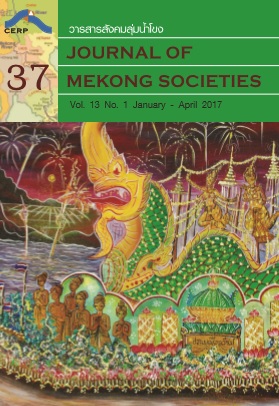A Comparison of Symbolic Textile Patterns among the Lao Phuan in Chieng Kwang, Lao People’s Democratic Republic; the Thai Phuan in Ban Mi, Lopburi Province; and the Thai Phuan in Hat Siao, Sukhothai Province, Thailand
Main Article Content
Abstract
This research in this article aimed to study, collect, organize, and compare symbolic patterns on the hand-woven textiles of the Lao Phuan in Chieng Kwang, Lao PDR; the Thai Phuan in Ban Mi, Lopburi Province, Thailand; and the Thai Phuan in Hat Siao, Amphur Si Satchanalai, Sukhothai Province, Thailand. Through fieldwork, the data were collected by observation, interviews, and recording on location in the three sites. The study found that the symbolic patterns on Phuan hand-woven textiles from all three areas reveal the people’s identity and reflect dynamic socio-cultural dimensions which have major roles in their societies and economics. The Phuan people interpret these patterns in accordance with their beliefs. They have tried to preserve their colorful culture, including both the mat mii design of Ban Mi and the tiin chokdesign of Hat Siao which originated in and were inherited from the Lao Phuan of Chieng Kwang. Although there are similarities in the designs among the Phuan people, there are also some differences, influenced by the environmental contexts where they are found.


